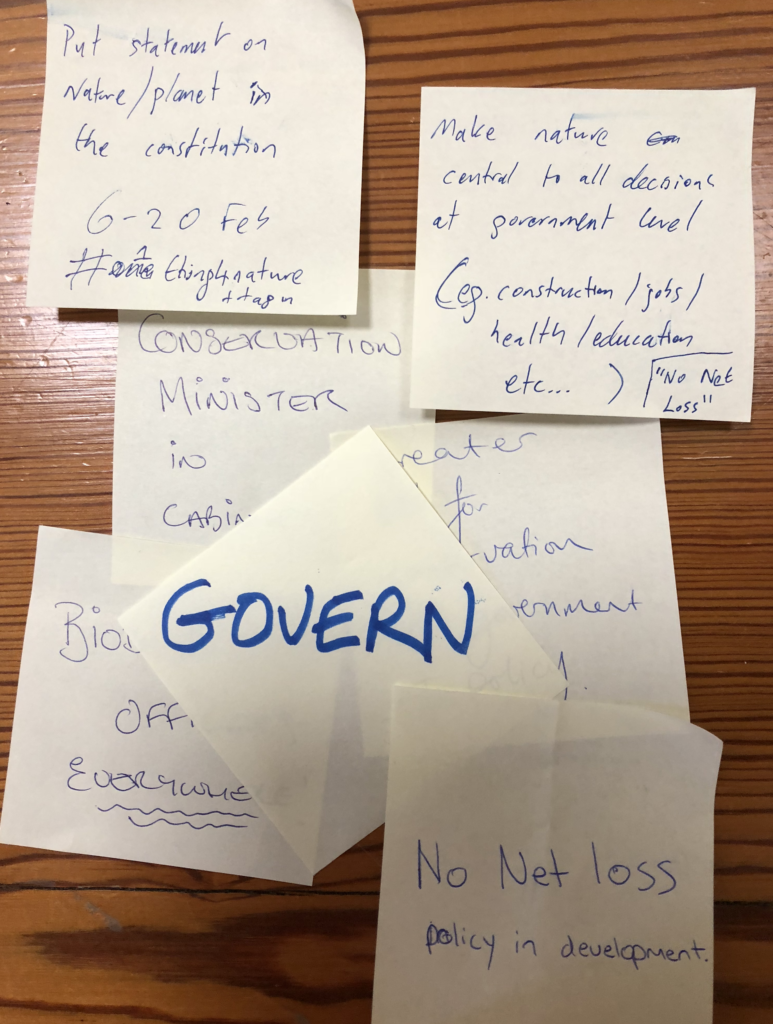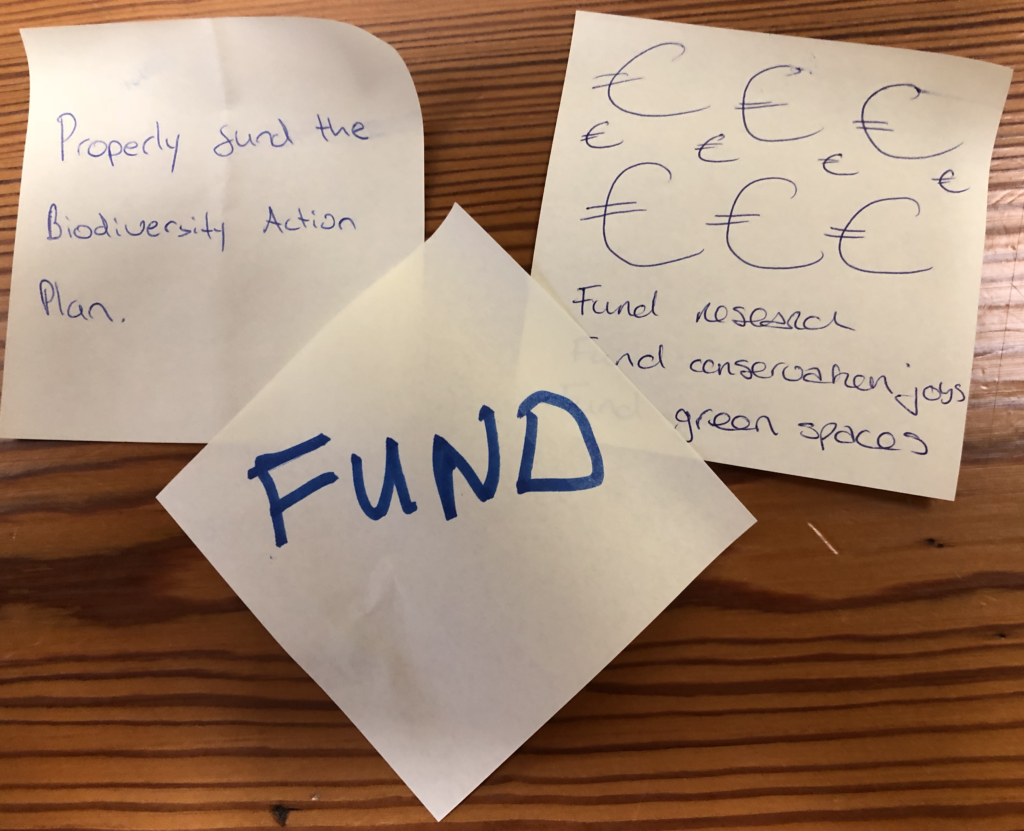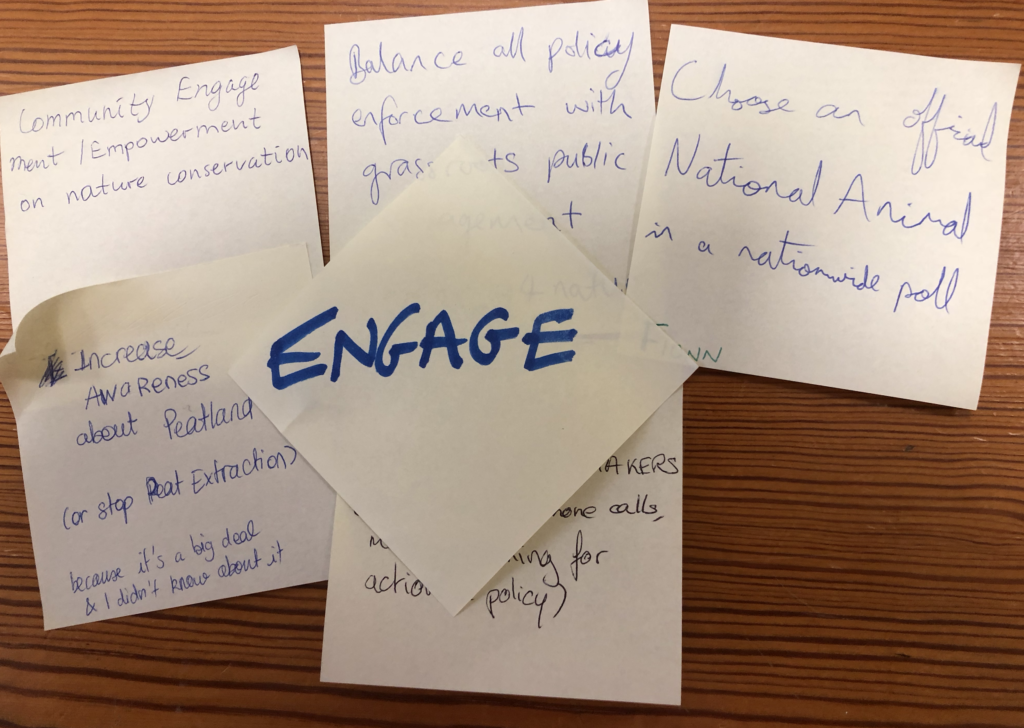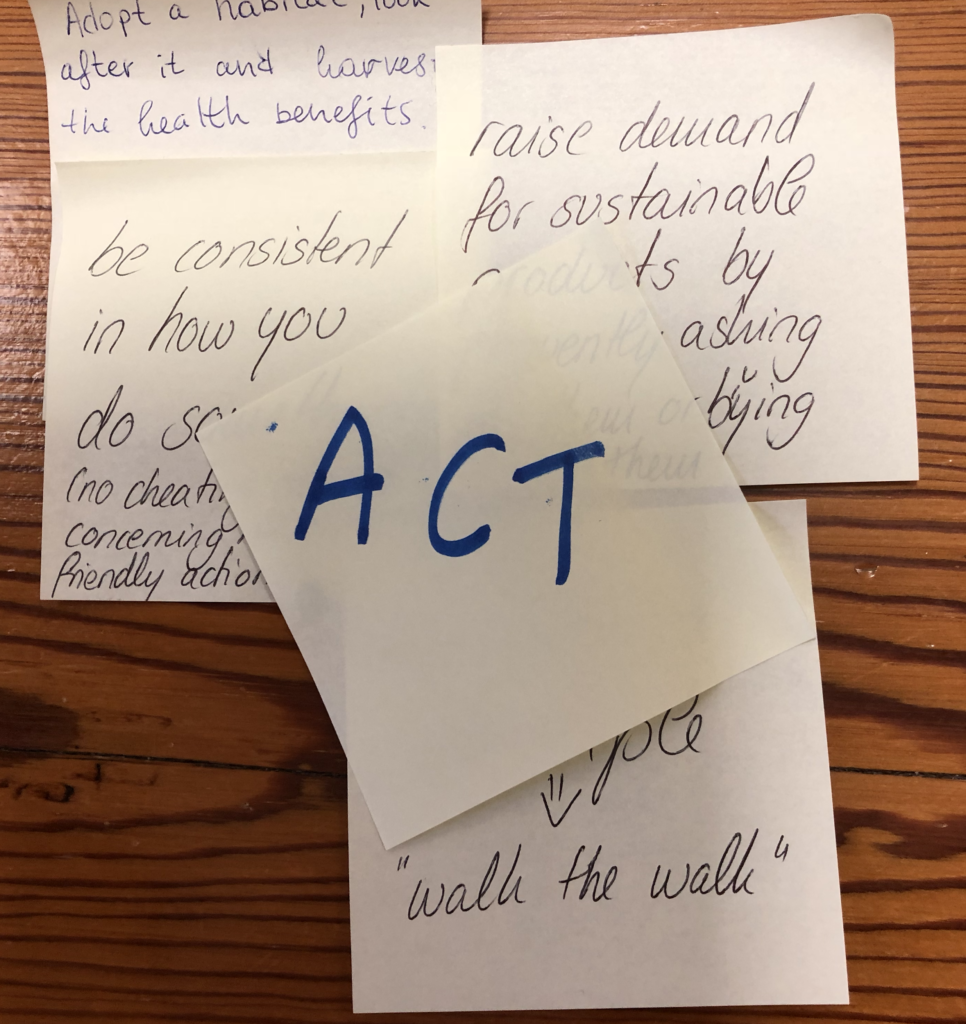- One Thing For Nature - 20/02/2019
- Donuts with a Doctor – musings on mentoring - 05/02/2019
- Advice for new Faculty - 27/07/2015
If you could do one thing for nature, what would it be?
Invent a new way of automatically cataloguing species? Put location trackers on every single individual of a threatened animal population? Start collecting DNA sequences of threatened species so we can de-extinct them, Jurassic Park style?
The answers I got to this question when I posed it to our Tuesday lunchtime group of PhD students, researchers, and academics, was far less sci-fi and much more pragmatic.
Enforce. Govern. Fund. Engage. Act.
The overall feeling in the room was that we should implement what we already know works. Our proposed actions fell into five main groups: enforce our existing legislation, show political leadership, engage people with both the benefits and threats, fund actions properly and take personal action where you can.

Our discussion betrayed the frustration that we feel having known about the threats to biodiversity in Ireland for many years. We have reports showing the poor status of habitats and species in Ireland and action plans aplenty. The most recent Biodiversity Action Plan outlines 119 actions for biodiversity. While there are many success stories about the successful implementation of actions for nature there is still a gaping implementation gap. I strongly suspect that we will not see significant improvement over the past 6 years in the status of habitats and species in the new round of EU Directive reports currently underway
We came up with some radical new ideas for government including the appointment of a Minister for Nature Conservation, putting a statement on the importance of nature in our Consitution, legislating to make nature considerations central to all government decisions, and putting well trained biodiversity officers everywhere.

I spent 9 years as an academic in the Centre of Excellence for Environmental Decisions where we had many discussions on prioritisation of conservation actions, with proposed prioritisation schemes centred on cost effectiveness. I applied some of this thinking to the management of invasive plant species.
The general idea of cost-effectiveness analysis is how we get the most “bang for our buck” from investments in conservation action. We are generally familiar with the idea of cost/benefit ratios (how much benefit per € spent) but a critical part of this equation is the probability of achieving that benefit, the probability of success of the conservation action. All the plans in the world and all of the amazing benefits that could be achieved will fail miserably if the probability of success is zero or low. Equally, the actions will fail if sufficient funding to cover the cost is not made available.

A recent national biodiversity expenditure plan for Ireland showed that funding is woefully inadequate. As a nation we spend just 0.1% of our GDP on biodiversity, the vast majority of this through agricultural subsidies. To put this in some context Thailand spends 0.4% of its GDP on biodiversity.

We desperately need to increase the probability of successfully implementing our conservation actions. Success requires enforcement of our existing legislation; but enforcement without political leadership, engagement with communities and adequate funding will fail.
Saving the planet is a typical “wicked problem” that can’t be solved by applying a simple equation; but, by focusing our efforts on implementing what we already know works, and on accountability, we will get further faster than we would by searching for newer, shinier silver bullets. As citizens, there’s a lot we can do including community tree planting schemes, responsible consumption, making space for nature, joining a nature organisation and celebrating the wonderful things that nature does for our health, wellbeing, culture, food production, and economy.
Perhaps the most important question is not ‘what’s the one thing we need to do for nature’, but ‘what can I do today?’. Maybe the most important thing for us and our leaders to do is just to act, do one thing, it will lead to another. Legislate where it’s needed, enforce what’s already there, plant a tree, become an environmentally responsible business, get informed, encourage pollinators to your garden, talk to your TD or MEP, join a march, watch birds, walk the walk. #1thing4nature

I wrote this blog post to coincide with a debate at the New Horizons for Nature conference in Dublin Castle 20/21 Feb on the topic: Bright Ideas for Nature Conservation – what’s the one thing we need to do? It also coincides with the #1thing4nature Twitter campaign which coincides with the conference.
______________
About the Author
Yvonne Buckley researches and teaches population biology, conservation, ecology and ecosystem management and is the Chair of Zoology at Trinity College Dublin. She holds an IRC Laureate award, is Chair of the National Biodiversity Forum and a former President of the Irish Ecological Association. Find out more about her research here:
Website | TCD Zoology
Twitter | @y_buckley
Google Scholar | Profile
Related Posts


One Reply to “One Thing For Nature”